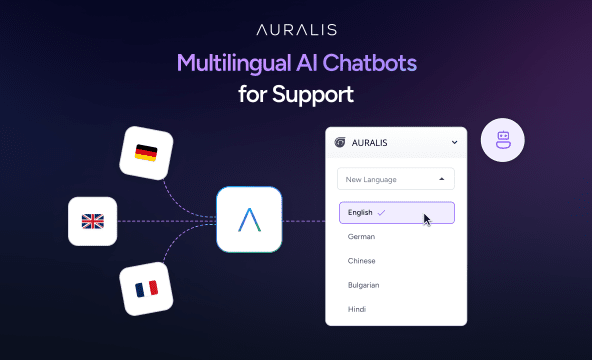AI-driven language support
AI-driven language support is transforming the way businesses communicate with their customers by breaking down language barriers and enabling seamless communication across different languages. Using advanced AI technologies such as natural language processing (NLP) and machine learning, AI-driven language support allows businesses to provide multilingual assistance in real-time, ensuring a personalized and efficient customer experience, regardless of the customer’s location or preferred language.
One of the key advantages of AI-driven language support is its ability to translate and interpret a wide range of languages instantly, without requiring human intervention. AI systems can automatically detect the language of the customer and provide responses in their preferred language, ensuring that communication is clear and effective. This is especially valuable for global businesses that cater to customers from different linguistic backgrounds. By providing language support in real-time, businesses can eliminate the frustration of language barriers, enhance customer satisfaction, and improve engagement with their diverse customer base.
For example, AI-powered chatbots and virtual assistants equipped with language support capabilities can engage in conversations with customers in various languages, offering assistance on a wide range of topics, from product inquiries to troubleshooting technical issues. These AI systems can process and understand the context of the conversation, ensuring accurate and relevant responses. Over time, they learn from interactions, becoming more adept at understanding regional dialects, slang, and customer preferences, which helps improve the quality of communication and overall customer experience.
In customer service, AI-driven language support ensures that customers can receive prompt assistance, even if their language is not commonly spoken in a specific region. AI systems can provide automated responses or direct customers to support agents who are fluent in their language. This results in faster response times, improved customer satisfaction, and a smoother support process. Moreover, AI-driven language support reduces the need for multilingual staff, which can be costly and difficult to manage, enabling businesses to scale their support operations without sacrificing quality.
AI-driven language support can also enhance customer engagement by providing personalized content and recommendations in a customer’s preferred language. By analyzing customer data, including their browsing behavior, purchase history, and interaction preferences, AI can tailor messages, advertisements, and product recommendations to suit individual customers in their native language. This level of personalization fosters a deeper connection between the business and the customer, increasing the likelihood of customer loyalty and retention.
For businesses operating in diverse international markets, AI-driven language support can significantly improve the efficiency of their marketing efforts. AI systems can automatically translate marketing materials such as email campaigns, website content, and social media posts, ensuring consistency and accuracy across different languages. This not only helps businesses reach a broader audience but also ensures that the messaging resonates with customers in a culturally relevant manner, which can drive higher engagement and conversion rates.
AI-driven language support also plays a crucial role in enhancing accessibility. By offering language options for customers with different linguistic needs, businesses ensure that their services are inclusive and accessible to a wider range of people, including those who may not speak the dominant language of a given region. This is particularly important in industries such as healthcare, education, and finance, where clear communication is essential to providing quality service and ensuring customer understanding.
In addition to improving customer support, AI-driven language support can also enhance internal operations. For example, AI can be used to translate internal documents, training materials, and communications within a company, allowing businesses to streamline their operations and enhance collaboration between global teams. This ensures that employees from different regions can easily access and understand the information they need to perform their roles effectively.
AI-driven language support systems are also continuously evolving. By leveraging large datasets and deep learning models, these systems are becoming increasingly accurate in understanding and interpreting complex language structures, idiomatic expressions, and cultural nuances. As AI technologies advance, businesses can expect even more sophisticated language support tools that can handle a wider variety of languages and dialects with greater precision and efficiency.
However, businesses must also consider the challenges associated with AI-driven language support. While AI-powered systems are highly effective, they may still struggle with certain nuances of human communication, such as tone, humor, or sentiment. In cases where empathy or deep understanding is required, human intervention may still be necessary to provide the best possible support.
Furthermore, businesses need to be mindful of data privacy and security concerns when handling customer interactions in multiple languages. Ensuring that AI-driven language support systems comply with relevant data protection regulations, such as GDPR, is essential to maintain customer trust and avoid legal risks.
In conclusion, AI-driven language support is revolutionizing the way businesses communicate with their customers, offering fast, efficient, and personalized assistance in multiple languages. By leveraging AI technologies, businesses can enhance customer satisfaction, engagement, and retention, while reducing operational costs and improving efficiency. As AI continues to evolve, its potential to improve language support will only grow, enabling businesses to expand their global reach and deliver a seamless customer experience across linguistic and cultural boundaries.

- Articles
When it comes to offering a great customer support experience, it’s not just about a good response time. Businesses that
-
 Amy
Amy
- 5 min read
